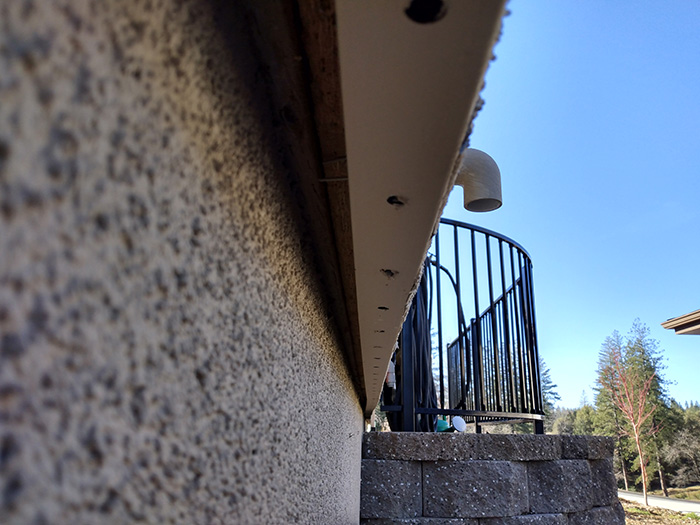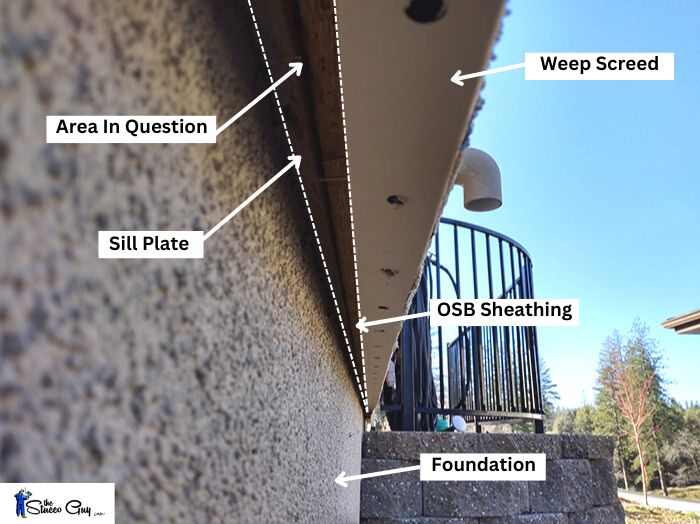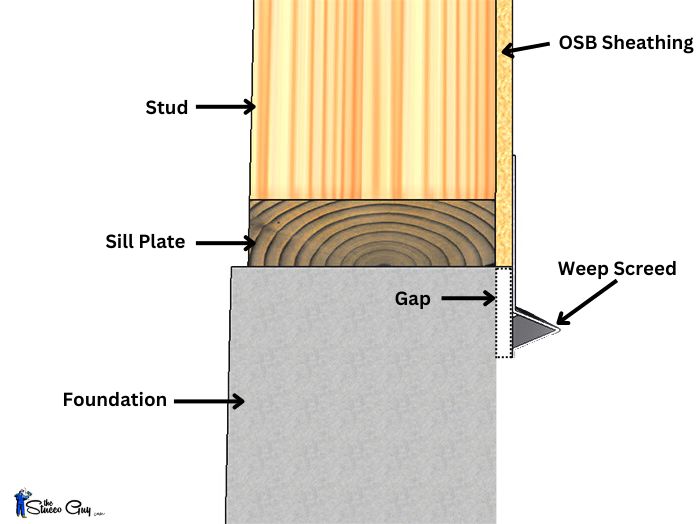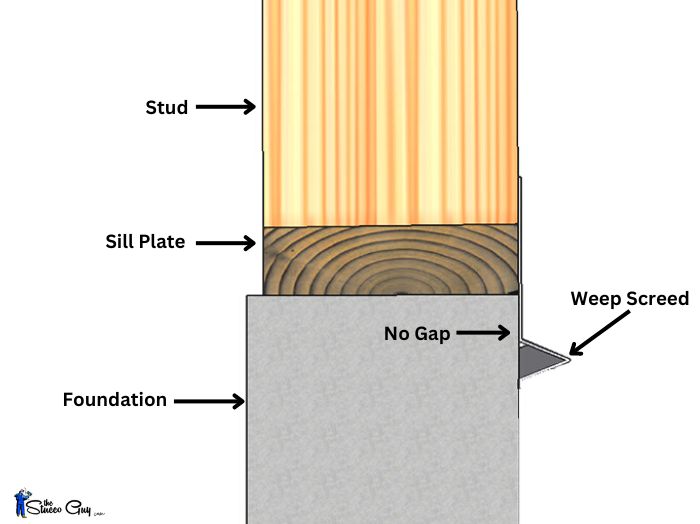
A question that pops up every now and again is whether you should seal the gap where the weep screed and the foundation meet, or would meet if there is no gap at all. This is really not that common of a question, but, like I mentioned, it does come up from time to time.
Can I Seal Up That Gap?
The first question you should be asking is whether you can seal up that area, without affecting the stucco system characteristics and the answer is, yes you can seal that area because it is behind the actual "system" part of the stucco walls and doesn't really interfere with anything.

Why Seal It Up In The First Place?
The main reason why people ask me this question is that they are concerned with bugs and insects that may potentially get in through this area, no matter how small they are! That is the main reason for sealing this area up.
Water intrusion isn't really a concern, depending on how low your weep screed is to a surface like soil, or concrete The roof overhang can also be a huge factor, or lack of one, I should say.
If your weep screed is 4 inches or more from any surface, then the likelihood of a lot of water splashing up behind the weep and ruining your sheathing or framing behind it is pretty minimal.
What Can I Use To Seal It?
I think you could use just about anything to seal up this area, caulking and spray foam being two of the most common materials used and would work great for this situation. A polyurethane or silicone caulking would provide the best seal and bond to this area, in my opinion, and last quite a long time with no exposure to most of the elements.
Since this area is not part of the stucco system and will not affect the stucco or the foundation, your options are pretty much limitless.
The Size Of The Gap Depends On A Few Things
Most people probably don't realize that the gap behind the weep screed can vary significantly or can be tight right against the foundation. This will depend on a few different things, most of which do not really matter when it comes to sealing up this area, besides how much material you are going to need to use.
Open Stud vs Shear Walls:
If your walls did not have any shear installed directly over the framing, then it would be considered an open stud wall and this would make the weep screed gap smaller because of the additional shear thickness, that will hold the weep off of the foundation more.


The Foundation's "Straightness":
You may also notice that this gap may vary due to the foundation form boards bowing out in spots when the foundation was poured. This is pretty common and not usually significant when it comes to variations in gap width.
Where The Bottom Plate Sits On The Foundation
This is probably the most important factor when it comes to how close the weep screed will be in comparison to the foundation.
The foundation is usually a little bit wider than the bottom plate is and this 2x material is set on top of the foundation using a chalk line and it can be mounted flush to the outside of the foundation or can be set back a little bit or, in some cases, quite a bit, which would affect that overall gap too.

